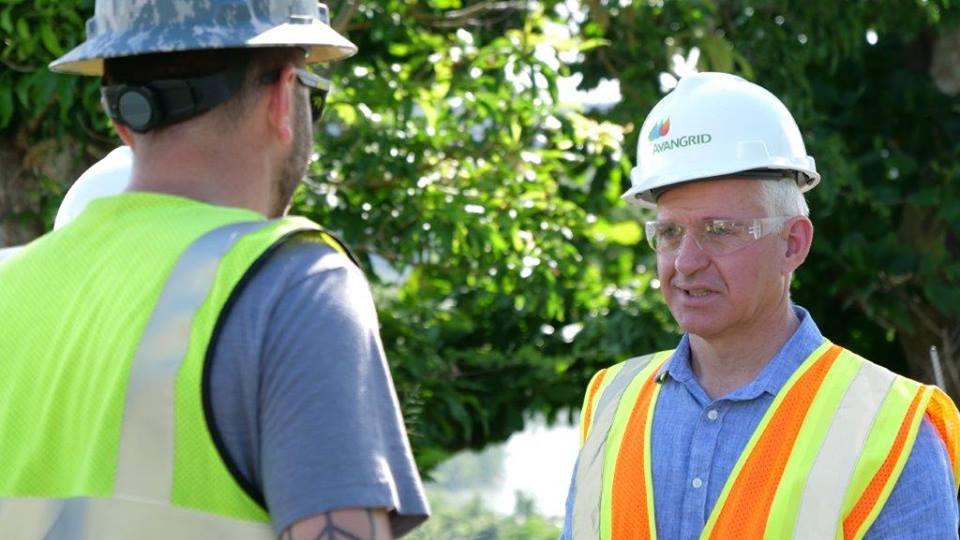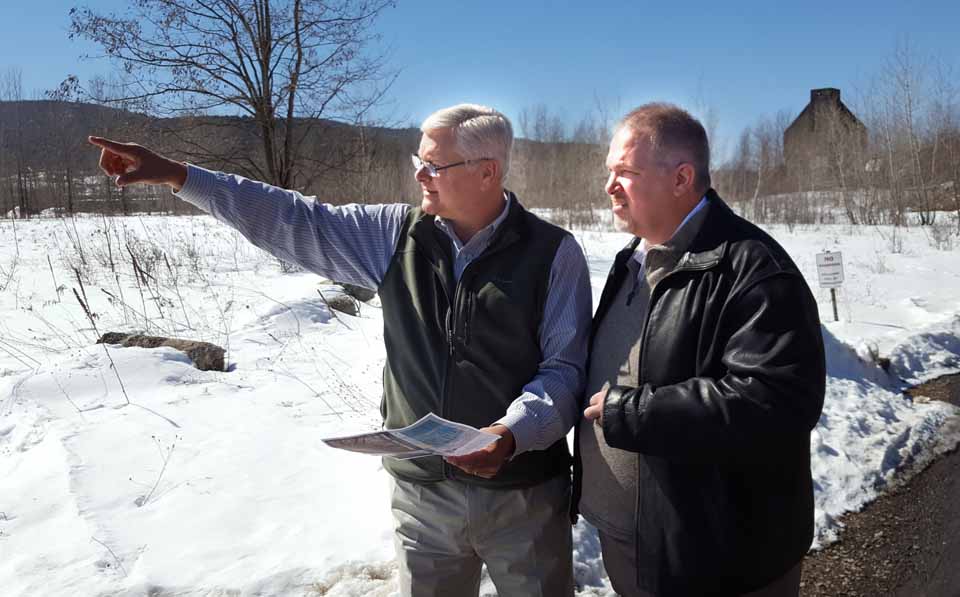EDITORIAL April 20, 2018
NYSEG Must Provide
Full Range Of Energy
OTHERWISE, OUTMIGRATION INEVITABLE

Let’s not be prophets of doom, but we’re all thinking people who can more or less put the pieces of the puzzle together.
In her March 29-30 column, our colleague,
columnist Cathe Ellsworth, alerted us to an
Albany Business Review report that Upstate
New York lost 2 percent of its population
between 2011 and 2015. Seven counties gained population; 20 lost it.
In our general area, Tompkins County – home of Cornell and Ithaca College – surprisingly lost the second most, 5.1 percent or 5,294 people. Our Otsego County was 11th on the list, losing 2.26 percent or 1,408 people.
•
The next week on our front page came the story, “Utility Retreats From Gas Pipeline Upgrade,” reporting how the utility serving our county, NYSEG, has backed away from upgrading the DeRuyter natural-gas line that runs to Sidney and then Oneonta, even though it received a rate increase to do so a couple of years ago.
In the article, Otsego Now CEO Jody Zakrevsky reaffirmed NYSEG can’t provide enough natural gas – or electricity, either – that any new manufacturer of any size would require to move here.
A Chinese company looking to establish a manufacturing plant somewhere in the U.S. came calling a few months ago, Zakrevsky continued. “We had proximity to an Interstate, water, sewer – but we could not meet their energy demands, either electrical or gas,” he said. “…Without that power, we’re limiting our ability to compete.”
The news hook for the story was a meeting state Sen. Jim Seward, R-Milford, hosted at his Albany office in mid-March for local business and community leaders to make a plea to NYSEG’s new president, Carl Taylor.

Curiously, Lou Allstadt, the retired Mobil executive vice president who has since become a high-profile foe of natural-gas expansion, who in an interview reaffirmed his support for renewables, has concluded gas is a necessary “bridge” fuel, particularly in manufacturing.
“One of the tougher things to convert to renewables is going to be industrial processes,” he said. “…Very clearly, industrial processes are unique almost plant to plant.”
He didn’t say Amphenol, the former Bendix, in Sidney, which provides 600 of the best manufacturing jobs (of few remaining) in the region, but he must have been thinking it.
—
The county Board of Representatives picked up on the issue at the monthly meeting April 5, with concerns expressed by Oneonta reps, in particular, that natural gas – perhaps even a CNG (compressed natural gas) station – might be necessary to make development of the D&H yards possible.
“There would be a lot of outcry about that,” said county Rep. Liz Shannon, D-City of Oneonta, in a follow-up interview.
If right, that will certainly limit the range of enterprises Otsego Now, which owned the property, and City Hall can consider as they seek to move the multi-million-dollar enterprise forward.
It may be wrong, but before going too far down any road to the yards, Mayor Gary Herzig and Common Council must test community sentiment about what might be possible, be sure it avoids the hornets’ nest Mayor John Nader walked into 10 years ago with the soon deep-sixed biomass plant at Pony Farm.
Liz Shannon said that is already being contemplated. “With people at both colleges interested in sustainability, this is a chance to do something really sustainable there.” Some discussion has focused on developing the yards as a food-distribution center, less energy-needed and perhaps powered to some degree by solar energy, she said.
—
If Oneonta zigs on natural gas, other communities are ready to zag.
When his Oneonta colleagues questioned a CNG station there, county Rep. Peter Oberacker, R-Schenevus, remarked, “There’s a wonderful spot in the Town of Maryland.”
The reference was no doubt to that 140 acres at I-88’s Schenevus exit, where Oberacker and Maryland town officials are seeking to attract a distribution center, given that Otsego Now has shifted its focus to the D&H site.
Another dimension is that NYSEG can’t even deliver sufficient power to existing entities, with SUNY Oneonta, Hartwick College and Fox Hospital being forced to shift from natural gas to more expensive fuel oil every time there’s a cold snap.
The reality is, Otsego County can have sustainable power and natural gas, too, and the business leaders who plan to meet with Taylor again May 5 should go after the whole range.
Without ready and sufficient energy, there’s no chance The Empire State can ever approach its former glory – and, frankly, NYSEG is required to provide sufficient energy, or should be. It’s supposedly a regulated utility – the state Public Service Commission should insist on it.
In March, NYSEG’s new president gave the local contingent a sympathetic ear; let’s hope he follows through. Regardless, sufficient energy of whatever type is a non-negotiable. Here and throughout New York, the NYSEG’s of this state must be required to provide it.
Without it, the future is limited, as our 1,408 departing friends and family members must have concluded.

